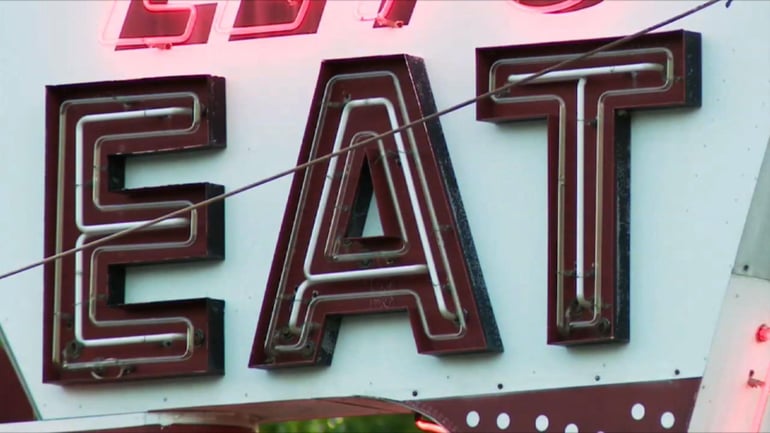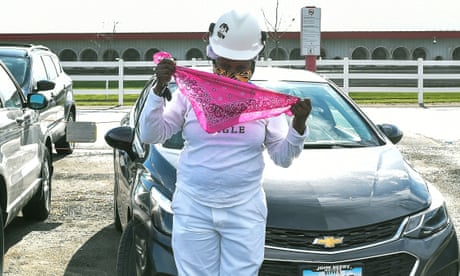 This article is published in partnership with Covering Climate Now, a global journalism collaboration strengthening coverage of the climate story.
This article is published in partnership with Covering Climate Now, a global journalism collaboration strengthening coverage of the climate story.
At first, California dairy farmer Felix Echeverria was skeptical about installing a dairy digester on his 12,000-cow operation. The process, which involved covering a pit of liquid manure and capturing the methane emissions it releases before “digesting” it anaerobically, is expensive and complex, and not something he was qualified to run. But he saw the benefits neighboring farmers in the Bakersfield area reaped from their digesters and decided to get ahead of a state law that would require him to reduce emissions by 2030.
“I realized I could stay ahead of the curve on greenhouse gas emissions,” Echeverria told Civil Eats. “To know we’ve been able to comply [with the law], that was the motive.”
The other deciding factor: Echeverria learned that he didn’t have to invest in or build the digester, as farmers in years past have. Instead, he partnered with a developer, California Bioenergy LLC (CalBio), that applied for public funding to help pay for the project and now operates the equipment. And in exchange for his manure biogas, Echeverria earns a percentage of sales from the electricity generated by the digester.
Get the latest articles in your inbox.
“There’s absolutely no drawbacks,” Echeverria said of the digester, which has operated on the farm since 2018.
Agriculture accounts for nearly a quarter of global greenhouse gas emissions, and as its role in changing the climate has become increasingly clear, farmers like Echeverria are being asked to do their part. In recent years, much of the attention—and the bulk of public dollars—has focused on anaerobic digesters, which help meat and dairy production facilities convert animal waste into energy that fuels vehicles and power grids.
Farmers, researchers, and policymakers across the U.S. see methane digestion as cost-efficient, effective, and revenue-generating for farmers. Proponents also see biogas and its cleaned-up version, biomethane (also known as renewable natural gas, or RNG) as a renewable source of energy that has a huge potential to replace more harmful legacy fuels.
Over the past decade, more than 250 digester projects have been built across the country, most of them on dairy farms. California alone has funded more than 100 digester projects, spending nearly $200 million of its ambitious California Climate Investments dollars on them. The state is poised to spend an additional $20-$25 million this year, though it’s unclear how the COVID-19 pandemic will impact the funding process going forward.
“The primary beneficiaries of these projects are the citizens of California. By reducing greenhouse gases, we are contributing to reducing global warming,” said Joyce Mansfield with the California Department of Food and Agriculture (CDFA), which runs a grant program for dairy digesters.
But digesters do have some drawbacks. They’re complex, expensive projects that farmers can’t afford on their own; they cost $3-5 million dollars each and typically require public subsidies to build—in the form of federal loans, state grants, tax credits, rebate programs, and myriad other incentives.
In the past, environmental advocates have supported digesters, but many have begun to see the technology in a new light. They say the emission reductions are not worth the massive public funding given that most manure-powered biogas comes from large-scale industrial dairy facilities known for their significant environmental impacts. (Straus Family Creamery in Northern California is one of a few exceptions.) As such, advocates say public financing of digesters amounts to supporting and helping to perpetuate large-scale factory farming—and in some cases, causing farms to grow in size—under the guise of mitigating climate change.
“Digesters are definitely reducing methane and generating fuel [and] electricity. It all sounds very good, but it’s not a clean fuel,” said Rebecca Spector, the West Coast director for the Center for Food Safety. “These enormous dairies are polluting the air and the water … and the state is promoting a false solution while propping them up.”
Ultimately, Spector said, portraying digesters as a panacea to dairies’ environmental woes is thwarting the move to a farming system that supports smaller-scale producers, reduced herd sizes, and cows on pastures. “We want dairies to move to more sustainable solutions and we support the state incentivizing that,” she said.
Pressure to Reduce Emissions
Large industrial dairies, also known as concentrated animal feeding operations, or CAFOs, clean manure out of their barns with water and store the liquid waste in large lagoons. As naturally occurring bacteria break down the manure, they release large quantities of methane, a greenhouse gas with a 25 times greater impact on global warming than carbon dioxide. In fact, more than half of California’s methane emissions come from dairies.
Manure management accounts for about 7 percent of agriculture emissions and in recent years, dairies across the U.S. have faced increased pressure to reduce that number. In California, the country’s largest dairy state, producers are required by 2030 to decrease their methane emissions by 40 percent from 2013 levels. And while much of the methane comes from cows belching, dairy manure lagoons account for approximately 25 percent of the state’s overall methane emissions.
Reducing those emissions is no small feat. In 2017, California housed 1.7 million cows—the vast majority of them residing in the Central Valley on approximately 1,300 dairies. According to the U.S. Environmental Protection Agency (EPA), an average dairy cow produces approximately 120 pounds of manure every day.
The digesters capture methane, convert the biogas to biomethane, and inject it into utility pipelines as renewable compressed natural gas (R-CNG) to power trucks, buses, and cars. In some cases, digesters also generate renewable electricity that’s used by the dairy, with the remainder sent into the grid. Dairy methane can also be turned into renewable electricity without combustion to power electric vehicles.
Because of the expense and scale of the projects, digesters are geared toward large dairies.
In the past, dairy producers built and operated their own digesters. But in recent years, as the projects have become more complex and their price tags have ballooned, big developers have largely taken over their funding, building, operating, and maintenance. Most of the digesters are now part of clusters, with the biogas sent to a centralized cleaning hub.
Because of the expense and scale of the projects, digesters are mainly geared toward large dairies—2,500 cows with support stock could support a standalone digester, according to digester developers. If a dairy is near a cluster project, it might work for it to be somewhat smaller.
While digesters may be expensive, data collected at the state level shows digester projects are cost-effective when it comes to reducing greenhouse gas emissions. In fact, the digester program is the second most cost-effective of the state’s 68 climate programs.
“Our projects are providing high value for the state in terms of return on their investment,” CalBio’s President Neil Black wrote in an email. “We are destroying methane, which has greater short-term warming impacts in initial years… [so] the climate benefits will be seen much sooner than projects that reduce carbon dioxide.”
Indeed, the greenhouse gas reductions can be substantial. Echeverria’s dairy digester was expected to cut its manure methane emissions by approximately 75 percent. It will also reduce energy costs and its use of fossil electricity from the grid. The digester delivers approximately 8 million kilowatt-hours of renewable electricity annually to state utility, Pacific Gas & Electric (PG&E). And the dairy is part of the Kern County Dairy Biogas cluster, a group of 16 dairies with approximately 60,000 milk cows that collectively produce approximately 6 million diesel gallon equivalents per year.
For large dairies, digesters can be a godsend: they cut the cost of complying with environmental rules, and offer a new source of revenue to supplement volatile milk prices. Farmers can also use electricity-engine waste heat to refrigerate their milk, resulting in further savings.
Digesters also provide benefits beyond emission reductions, Echeverria said. “We don’t have as much solids to deal with in the waste stream because a lot more material gets digested and turned into gas. We can move it around easier, our lagoons stay cleaner, and we get a better fertilizer source,” he said, referring to the fact that nutrients are broken down more thoroughly in the digester and are more available to the plants when the manure is spread on fields. And because digester projects are required to double-line the lagoons, he says nitrates don’t leach into groundwater.
Digesters also reduce emissions of hydrogen sulfide and other gases, said Black, CalBio’s president, improving air quality and reducing odors. The company is working to help convert truck fleets from diesel to natural gas, he said, which will significantly reduce nitrogen oxides, a major component of smog, in the highly polluted Central Valley where residents live with some of the worst fine particle pollution in the nation.
But Spector with the Center for Food Safety contends that while digesters do provide some benefits, they don’t solve the issue of nitrates contaminating groundwater—a major issue in the Central Valley, where low-income residents are often forced to rely on bottled water. That’s because nitrates often leach from manure applied as fertilizer into groundwater. Spector says that when digesters burn biogas they also produce air pollution. In addition, the digesters don’t address the climate impacts of enteric emissions (from cows releasing gas) which account for about half of the methane emissions from dairies.
Subsidies for Developers, Revenue to Industrial Dairies
Critics also decry the fact that much of the public funding for dairy digesters has gone into the hands of just a few developers.
In California, the CDFA has created a research and development program that is funded with the state’s cap and trade dollars. From 2015 to 2019, the program has awarded over $180 million to 108 projects, the agency told Civil Eats. And yet the vast majority of that money has gone to just two developers (only 12 developers have ever applied, the agency said).
CalBio has receive the largest amount: $99 million to date. And Maas Energy Works has been awarded $82.5 million. The CDFA grants require a 50 percent financial match, though those funds can also come from other public sources. Both companies also say they have received other public funding for their projects. Additional capital for the projects comes from investors and lenders.
CalBio currently operates five projects in California and is developing, according to its officials, more than 60 additional digesters in seven clusters of existing dairies that will produce renewable compressed natural gas for use in vehicle fleets. Maas Energy Works has a total of 27 digester projects, including 22 in California, three in Washington state, and two in Oregon.
“California has required the dairy industry to reduce their methane emissions by 40 percent. The best way to achieve that reduction is with dairy digesters,” Maas Energy Works spokesman Doug Bryant told Civil Eats via email.
The digester projects are a financial boon to both the developers and farmers. While in previous years, their value was based around renewable electricity generation and the sale of carbon credits, it now comes from the production of low carbon fuel, through the sale of natural gas, as well as the generation and sale of “credits” that can be sold to polluting companies and other organizations that use them to comply with state and federal requirements or voluntary emissions goals.
Precisely who benefits from these income streams varies from project to project. But with the new generation of digesters, it is often the developers who bring in the capital and who then own the digesters while the dairy producers rent their lagoon and provide the manure in return for a cut of the power sold. “Our company helps bring in the capital from lenders and investors. The dairies… receive the payment for contributing their manure, and the better the project performs, the more they will make,” said CalBio’s Black.
He added that dairies have an opportunity to invest in their projects, but that is optional. In Maas Energy Works projects, on the other hand, over half of the projects are 100 percent owned by the dairy farmer and the developer simply operates the digester for a fee, the company told Civil Eats.
Fight Over Renewable Gas
In the coming years, digester developers and dairy farmers may tap into an even bigger source of income as the gas industry looks to replace some of the “fossil-based” natural gas it currently sells. Natural gas companies such as SoCalGas and PG&E have heavily promoted biogas as a cost-effective, reliable “renewable natural gas.” The private utilities say that mixing RNG with regular gas in their pipelines will reduce its carbon intensity. And it appears the gas industry may get its way, at least in the short term.
While in the past, digester projects generated electricity for export to the grid, the current focus is on using the dairy biomethane—in the form of CRNG—as an alternative vehicle fuel and energy source. Out of 108 projects funded by the CDFA since 2015, 102 produce or will produce CRNG. And in recent years, these are built in a cluster of digesters that pipe gas to a centralized hub.
Two years ago, a new California law essentially mandated that a certain amount of biogas from manure and other renewable sources be included in utilities’ energy mix and for it to be injected into the gas pipeline system. The California Public Utilities Commission is currently in the process of creating a procurement standard to make that possible.
Legislators recently extended the ability to tap into $40 million in subsidies through a program that connects manure digesters to utility pipelines. And the SoCalGas settlement for the Aliso Canyon gas leak is also channeling $26.5 million toward the construction of dairy digester projects.
While some have praised this move, critics say it has created a whole set of ethical issues. Jim Walsh, a senior energy policy analyst with Food & Water Watch, says that using California Climate Investment funds to produce renewable gas from biomethane that utilities want in their portfolio supports not only factory farming but also the legacy fossil fuel industry—and could ultimately allow it to continue its polluting ways.
“These cap and trade funds are huge subsidies that utilities and other large polluters pay for to avoid their own emission reductions…. It allows them to greenwash themselves while proceeding with their practices,” Walsh said. “This is really just a shallow attempt to extend the life of their industry in the face of a growing backlash against fossil fuel development.”
Using biogas from manure as part of utilities renewables portfolio isn’t cost effective either, Walsh added, and will significantly increase rates for consumers. Methane-derived RNG can also leak through pipelines when transported, just like natural gas. And the bet on biogas from dairies is happening just as cities around the country are focusing more on electricity and passing laws to stop the building of new gas infrastructure.
In California, state officials have also pushed electricity as a strategy for cutting emissions from homes and workplaces. Meanwhile, utilities like SoCalGas counter that using biogas as part of their energy mix can reduce greenhouse gas emissions faster and cheaper than electrifying buildings.
Ultimately, what could make utilities’ move to biogas problematic is simply a problem of supply. Studies show there likely won’t be enough RNG/biomethane to meet the state’s climate goals.
Alternatives Underfunded, Lag Behind
Dairy digesters aren’t the only way to manage manure’s methane impact, but environmentalists say that other, more cost effective and sustainable methods tend to be much harder to get funded.
The CDFA runs a second methane reduction grants program called the Alternative Manure Management Program (AMMP). Those include projects focus on different ways to handle manure, such as composting and conversion to something called dry scrape collection, as well as enhanced pasture-based management practices (though few producers have applied to move their cows to pasture).
The program’s funding makes up only 20-30 percent of the total available for methane reduction programs, records show. More producers apply for the AMMP funding than for digester dollars, but in 2019 about half were rejected due to lack of funding.
The CDFA told Civil Eats that the dairy digester program has greater reductions of greenhouse gases than the alternative program. But Jeanne Merrill, policy director of California Climate and Agriculture Network (CalCAN), said the agency’s comparison is flawed. The CDFA calculates emission reduction impacts from AMMP projects on a 5-year project basis, she said, while those from the digester projects are calculated on a 10-year basis. “That’s comparing apples to oranges,” Merrill said.
CDFA officials said they use those time spans because they represent the expected duration of the projects. But Merrill said when greenhouse gas reductions are compared across both programs using similar timeframes, the AMMP projects fare quite well and sometimes do a better job with emission reductions per dollar.
AMMP projects are also faster to implement. Of the 108 digester projects awarded grants since 2015, only 13 are now complete and operational. The remaining 95 are at different stages of implementation.
Alternative methane reduction projects can also help protect water and air quality, Merrill added. Because they’re less expensive, they’re accessible to smaller farms and have greater geographic impact. And while digester projects are only guaranteed for 10 years (although Maas Energy Works told Civil Eats its digesters are expected to survive for at least 20), alternative projects are not subject to changes in complex technologies so are easier to maintain long-term.
“The trouble with digesters is that they only work for a quarter of the state’s dairies,” Merrill said. “Small and middle-sized dairies don’t have enough manure or capital to justify building digesters.”
Given the benefits, Merrill added, the CDFA should allocate half the available funding to non-digester programs.
Coronavirus May Stem the Tide of Funding
As the COVID-19 pandemic rages through California and the rest of the country, it’s still unclear how it might impact dairy digester projects. The pandemic has battered many smaller dairy farmers, with demand for dairy dropping and milk prices at historic lows. But both California Bioenergy and Maas Energy Works told Civil Eats that beyond minor delays and a slow-down in financing, the virus has had a limited impact on their operations so far.
In the near term, the impact may be financial. Before the pandemic, California’s governor Gavin Newsom proposed a budget that included a new ambitious Climate Catalyst Fund of $1 billion over the next four years. Companies—including farms and digester developers—could apply to get low-interest loans to reduce their climate impacts. That budget proposal, Newsom now says, “is no longer operable” and will have to be revised.
But given the fact that CDFA set its budget for 2020 loans last year, even the pandemic isn’t likely to stop the state’s fledgeling dairy digester industry from progressing—at least for the foreseeable future.
Top photo: The Riverview Dairy Digester in Pixley, California. It receives manure from roughly 3,000 cows, plus replacement stock. (Photo courtesy of Maas Energy Works)

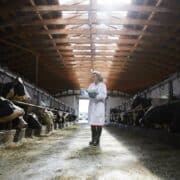


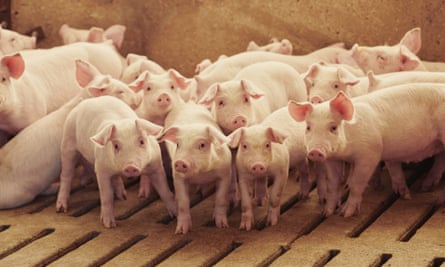



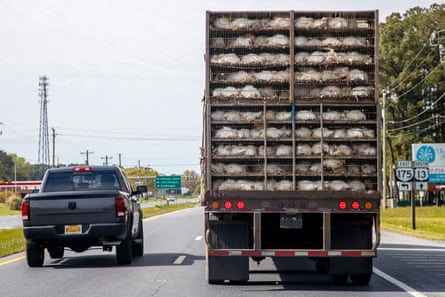
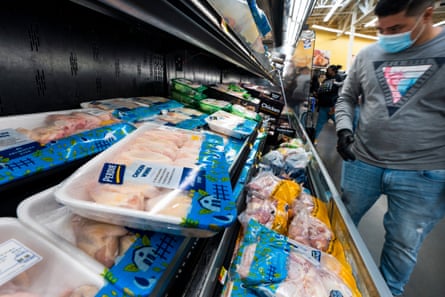
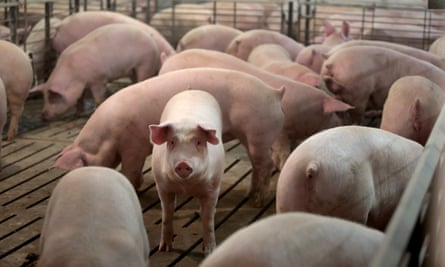
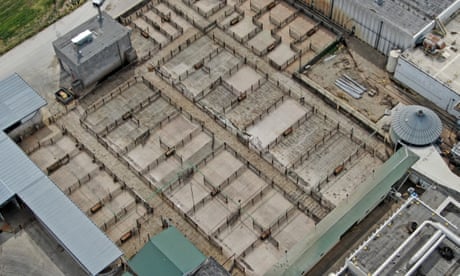
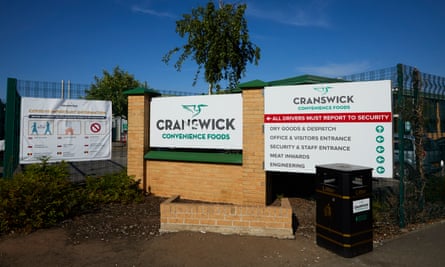
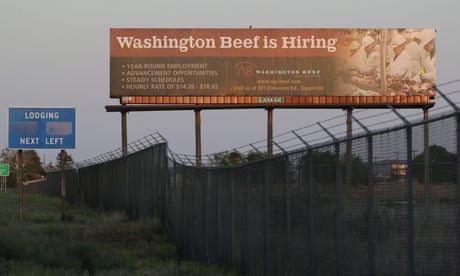

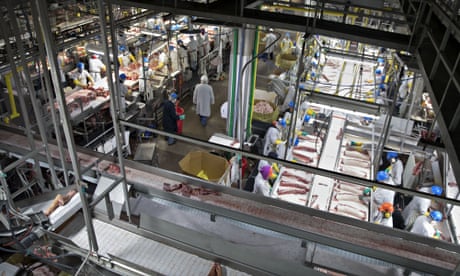

 This article is published in partnership with
This article is published in partnership with 